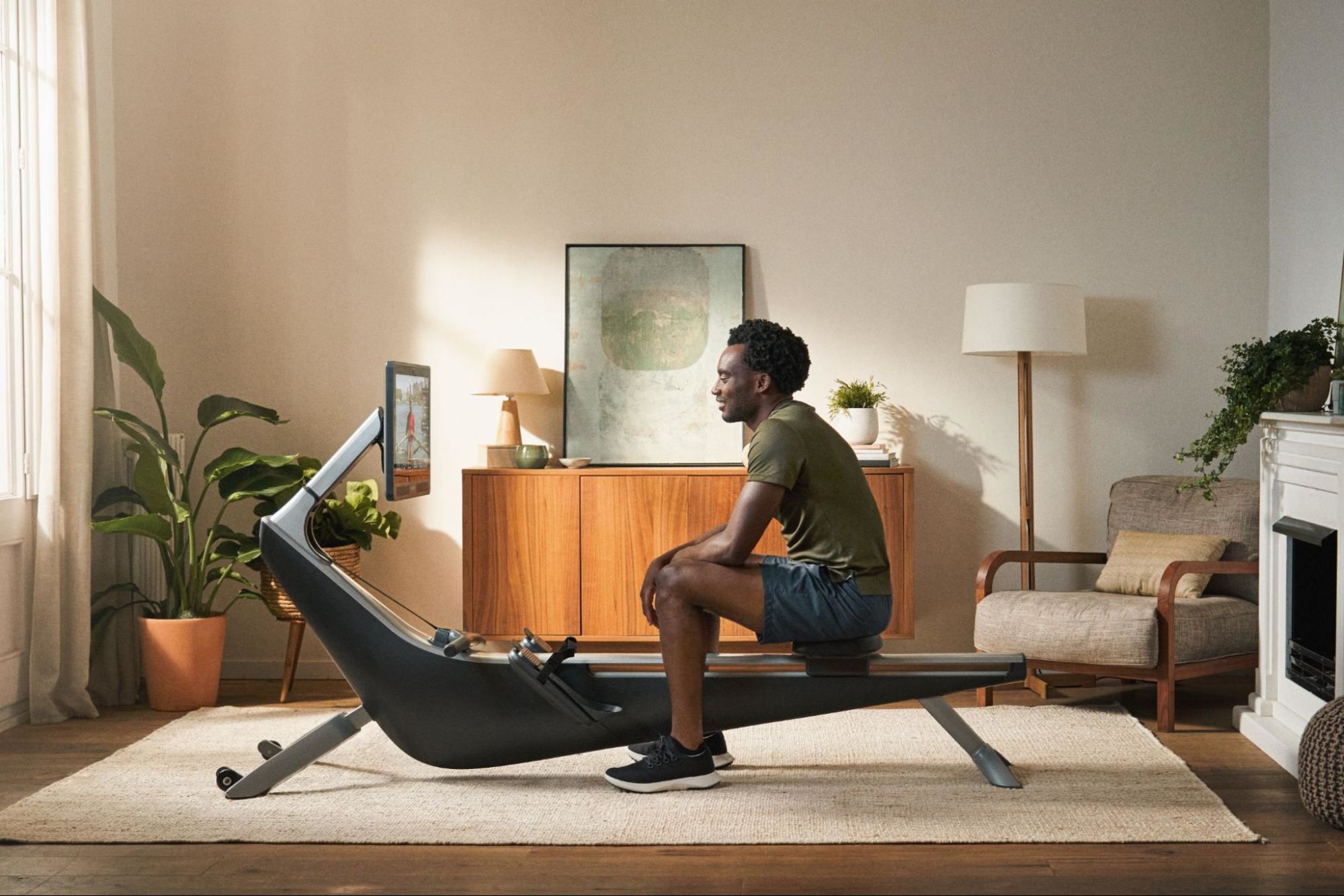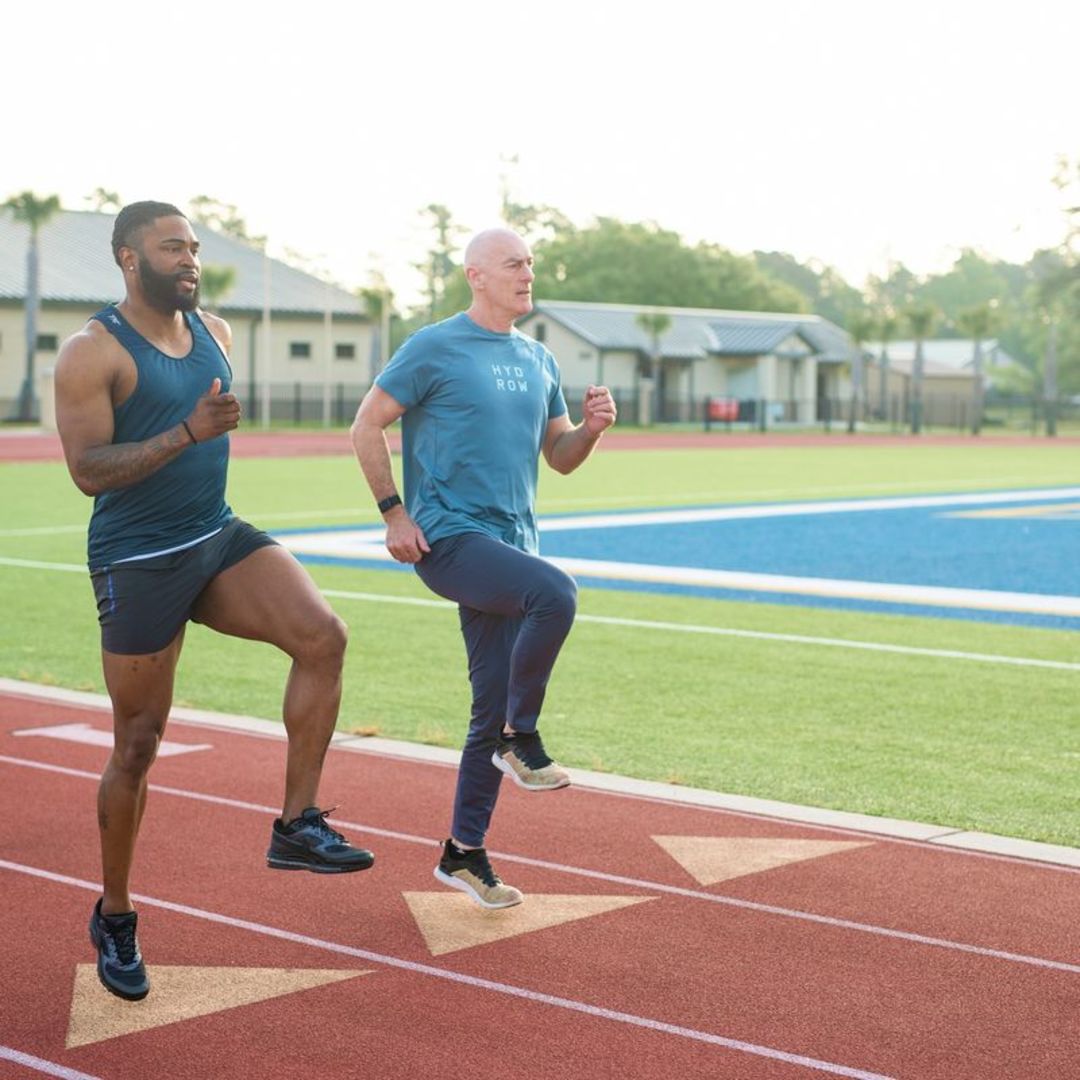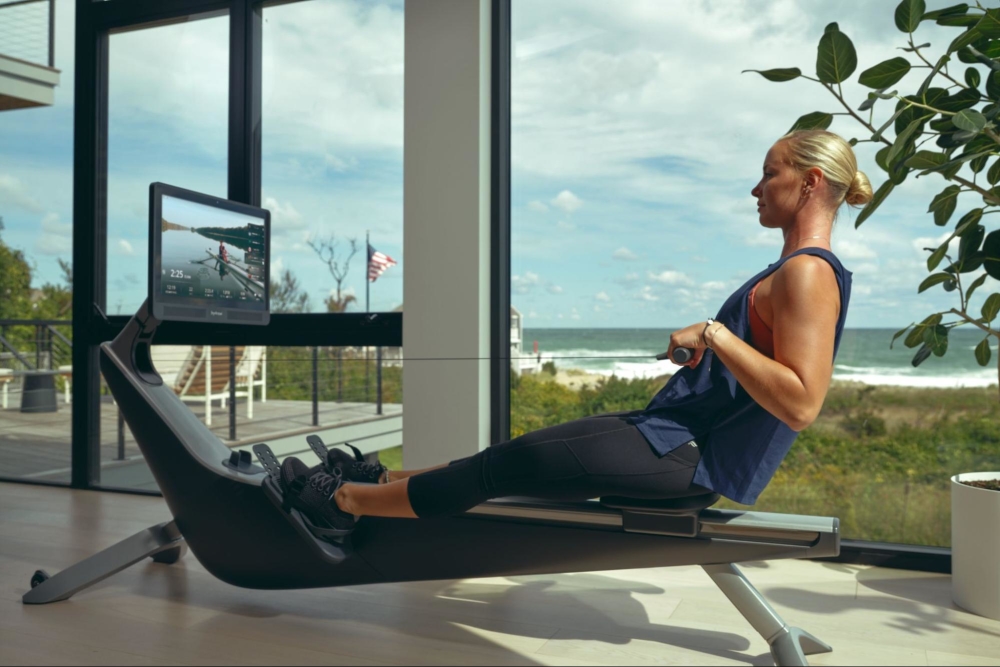What Does a Rowing Machine Do?

A rowing machine — sometimes known as an ergometer or rower — is a machine used to simulate the action of rowing on the water for the purpose of exercise and training. Offering the ultimate full-body workout, rowing machines like the Hydrow Rower offer a wide range of health benefits, making them a valuable addition to home gyms and fitness centers alike.
In this comprehensive guide, we’ll answer the common question of, “What does a rowing machine do?” including exploring how a rowing machine works and what regular rowing machine workouts can do for your body and overall health.
Let’s get started!
Your guide to the rowing stroke and proper rowing form
Before diving into the health benefits of rowing machines, it’s essential to understand how rowing machines work. Rowing machines simulate the action of rowing a boat, providing a full-body workout that engages major muscle groups of the body.
In order to get the most out of a rowing workout, it’s important to take some time to understand the proper rowing form.
To begin, securely strap your feet into the footplates and grab the handle with both hands. Then, each rowing stroke follows these five core movements:
“The Catch”
This is the starting point of the rowing stroke. Mobility may vary from person to person, but generally, in this position, your knees are bent and your shins are vertical. Your core is braced and your body is pivoted from the hips in a forward, 1 o’clock position. Your arms are fully extended and you’re holding onto the handle, which is hovering just past your feet.
Leg drive
While holding your body in a forward, 1 o’clock position, initiate the rowing stroke by pushing with your legs, powerfully into the footplates. This action activates the glutes, hamstrings, quadriceps and calf muscles, providing a powerful and efficient start to each stroke.
Engage the core
As you push with your legs, keep your core engaged and arms extended. As the handle passes over your ankles and you begin to feel the resistance from the rowing machine activate, begin to swing and pivot the body from the hips into an 11 o’clock position. This motion recruits your abdominal muscles along with the core muscles surrounding your lower back, which helps to build better posture and a stronger core.
Finish the stroke
As your body swings into the 11 o’clock position — otherwise known as “The Finish” position — complete the stroke by pulling the handle into your body, just below your chest. This phase of the stroke engages your upper body, specifically your lats, shoulders, biceps, and triceps.

What’s your fitness style?
Take our quiz and receive a customized 14-day training program.
Recovery
The rowing stroke is a cyclical and sequential process. Once you’ve completed one stroke, return to the catch position by setting the body in a strong position. Extend your arms and float the handle away from your body, brace the core and pivot at the hips, and allow your knees to bend.
Once you’ve returned to the catch position, you may start the sequence over again. The recovery phase of the stroke allows your muscles to recover and prepare for the next stroke.
Getting comfortable with the sequencing and body positioning of the rowing stroke will ensure a smooth and efficient workout while reducing the risk of injury.
Taking time to complete a Learn to Row program or by working with experienced coaches, like the Hydrow Athletes, is the easiest way to make sure you’re progressing.
What does a rowing machine do for your body?
Rowing machine workouts offer a ton of health benefits for your body, including aiding with strength training, cardiovascular health, low-impact exercise, and improving your mind-body connection. Learn more below about what a rowing machine can do for your body:
Rowing machines and strength training
One of the primary benefits rowing machines provide is the ability to simultaneously engage the majority of the body’s major muscle groups, which makes rowing an efficient and valuable tool for building strength. Rowing machine workouts can help you strengthen your:
Legs: The leg drive phase of the stroke primarily targets the glutes, quadriceps, hamstrings, and calf muscles, building lower-body strength and endurance.
Core: Maintaining proper form throughout the rowing stroke strengthens your core muscles, contributing to better stability, flexibility, posture and overall core strength.
Back and shoulders: As you complete each stroke by pulling the handle into your body, your upper-body muscles are engaged — particularly, the back muscles (latissimus dorsi), shoulders (deltoids), and arms (biceps and triceps). This phase of the stroke helps to strengthen your upper body and improve posture.
Rowing machines use a resistance mechanism that can be adjusted to increase or decrease the intensity of a workout, making an accessible workout for various fitness levels. Most rowers, however, will typically find and set the resistance on their rowing machine to a level that replicates the feeling of resistance on the water. On Hydrow, we recommend rowing at a drag factor of 104.
Related blog: Is Rowing Hard?
Rowing as a cardiovascular workout
In addition to building strength, rowing machines offer an effective cardiovascular workout. Having a consistent rowing routine can significantly improve your cardiorespiratory system by:
Promoting heart health: Rowing increases your heart rate, which enhances heart health and strengthens the cardiovascular system over time. Improved heart health can reduce the risk of heart disease and related conditions.
Burning calories: Rowing is a calorie-burning exercise. The intensity of your workout (combined with other healthy habits like getting enough sleep and maintaining a balanced diet) can help you manage your weight, making it an excellent exercise to include in your wellness routine.
Improving lung function: Rowing promotes healthier lung function by increasing your oxygen intake and enhancing respiratory capacity. Improved lung function contributes to overall stamina and endurance.
Rowing workouts can be customized to fit your individual fitness level and goals. Whether you’re aiming for a high-intensity interval training (HIIT) workout to boost your metabolism or a steady-state cardio session to improve endurance, rowing machines can accommodate your workout preferences.
Rowing is low-impact
While rowing is a great cardio and strength-building workout, it is also an exercise that puts minimal stress on your joints. Here’s why rowing is considered low-impact:
Reduced weight-bearing: Unlike other cardio or weight-bearing activities like running or aerobics, rowing is a seated exercise, which means your body weight is supported by the seat and not continuously impacting your feet or legs. This makes rowing a suitable option for those with joint issues or those recovering from injuries.
Even muscle engagement: Rowing engages both upper- and lower-body muscles in a balanced manner, simultaneously distributing the workload across various muscle groups. This reduces strain on any single joint or muscle group, minimizing overuse injuries.
Mental health and well-being: The mind-body connection
Beyond the physical benefits, rowing can have a positive impact on your mental health. Exercise, in general, is known to release endorphins, which are natural mood-boosters. Rowing even offers its own unique mental health advantages, including:
Stress reduction: Rowing can be a meditative movement. The rhythmic motion and focus on proper form can create a calming and stress-reducing experience.
Improved mental clarity: Consistent exercise, like rowing a few times a week, can enhance cognitive function promoting better concentration, sharper focus and overall well-being.
The feeling you get after completing a row, the endorphin rush, mental clarity and sense of accomplishment, is what we define as the “Hydrow High.”
What does a rowing machine do? Final thoughts
To summarize, rowing machines are a great way to mimic the full-body workout you get on the water and can provide you with a strength-building and cardiovascular workout that offers a multitude of health benefits. Whether you’re a fitness enthusiast or just beginning your journey towards a healthier lifestyle, a rowing machine can be a valuable addition to your routine. It is a versatile and effective tool that, due to its low-impact and reduced weight-bearing nature, many people can enjoy.
Hydrow welcomes all who are interested in adding rowing to their wellness routine and journeying towards a healthier lifestyle. With thousands of different workouts led by world-class Athletes who are inclusive and uplifting teachers, you can customize your routine to fit your individual preferences. Learn more about Hydrow’s rowing machines today!

Explore Hydrow
Learn more about how you can transform your fitness routine with a rowing machine.


